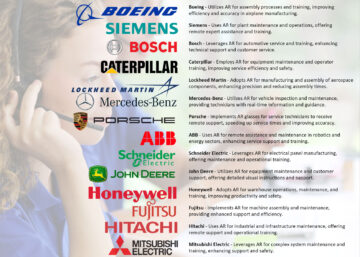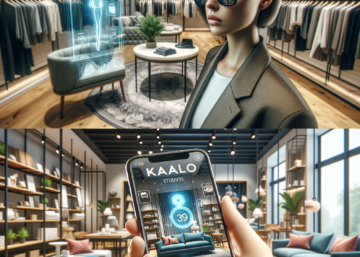Every workplace requires some sort of training — upfront and ongoing. Training with augmented reality (AR) can enhance that, helping employees learn faster, more safely and at lower costs. With AR, people can experience hands-on training without the risk or expense of a real-world work situation.
“There is truth in the concept that people learn by doing. AR provides the opportunity for hands-on learning in a structured, interactive way. Trainees can practice job activities in real-time at their own pace and without pressure from customers, managers and performance expectations.”
~ Lorne Fade, Forbes, Feb. 2021
AR and New Employee Training
According to Michael Porter, some companies are already using augmented reality to reduce the training time for new employees to nearly zero. It also means they are able to hire people who are initially less skilled. Package delivery company DHL has found this especially advantageous with their seasonal hires during peak shipping times. The real-time training and guidance they can provide with AR has made their onboarding process faster and reduced their reliance on human instructors. Other organizations, including the U.S. Navy and Boeing, have also taken advantage of the efficiency of augmented reality training. (Harvard Business Review, 2019)
AR and Ongoing Training and Support
Historically, companies that engage in product maintenance have provided field engineers with support through service manuals and over the phone. Xerox now uses AR to connect its field techs with experts, increasing first-time fix rates by 67 percent and reducing average fix times by two hours. (Harvard Business Review, 2019) In this way, AR can be used not only in training new employees but in supporting existing ones, remotely and expediently.
Augmented Reality Support for Customers
With AR’s ability to overlay step-by-step instructions on a real-world environment, it can support customers in solving their own problems. When Xerox experimented with using AR in this way, they managed to solve 76 percent more problems without on-site help, which saved on travel costs and minimized downtime. Most significantly, customer satisfaction went up by 95 percent. (Harvard Business Review, 2019) This model could apply to end-user products from laptops to vehicles to kitchen appliances, increasing efficiency in repairs for both companies and customers.
Augmented reality training has applications in retail through simulated customer service interactions, with the military and combat training, medicine and hands-on anatomical learning and even in space with a reconstructed Mars landscape. (Forbes, Feb. 2021) The possibilities in increased efficiency, lower cost and safer training experiences give augmented reality, as a learning tool, almost endless potential.



